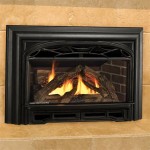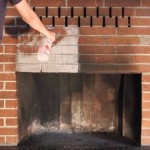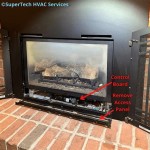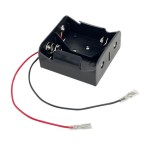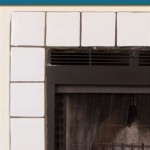The Enduring Appeal of Fireplace Timber Mantels
Fireplace timber mantels represent a nexus of functionality and aesthetic appeal in interior design. Their presence within a room contributes significantly to its overall character, imbuing a space with warmth, tradition, and a sense of groundedness. Unlike mass-produced, synthetic alternatives, timber mantels offer a unique combination of natural variation, structural integrity, and timeless beauty that continues to resonate with homeowners and decorators alike. This article will explore the various aspects of fireplace timber mantels, highlighting their advantages and considerations for integration into different architectural styles.
The inherent characteristics of wood make each timber mantel a singular piece. The grain patterns, knot formations, and subtle color variations are all testaments to the wood's origin and growth. This natural individuality ensures that no two timber mantels are ever exactly alike, offering a distinct personalization to the fireplace and the room. Furthermore, the tactile quality of wood provides a sensory experience that is often lacking in other materials. The smooth, warm surface of a timber mantel invites touch and adds a layer of comfort to the surrounding environment.
Enhancing Aesthetic Versatility
One of the key strengths of fireplace timber mantels lies in their adaptability to a wide range of design aesthetics. Whether the desired style is rustic, contemporary, traditional, or eclectic, a timber mantel can be selected and customized to complement the existing decor. For rustic settings, a reclaimed timber mantel with visible imperfections, such as checks and cracks, can enhance the raw, natural feel of the space. The weathered appearance of reclaimed wood adds character and tells a story of its past life. A live edge mantel, retaining the natural contour of the tree from which it was sourced, further amplifies this rustic charm. Conversely, for contemporary interiors, a sleek, precisely milled timber mantel with clean lines and a smooth finish can provide a sophisticated and minimalist accent. Light-colored woods, such as maple or birch, are often preferred for modern designs, as they offer a subtle warmth without overwhelming the space. The choice of finish also plays a crucial role in defining the mantel's aesthetic. A matte finish preserves the natural look of the wood, while a glossy finish adds a touch of formality and elegance.
The size and proportions of the timber mantel should be carefully considered in relation to the fireplace opening and the overall dimensions of the room. A mantel that is too large can overpower the space, while one that is too small may appear insignificant. A general guideline is to select a mantel that is approximately as wide as the fireplace surround and that extends a few inches beyond the firebox on each side. The depth of the mantel should also be proportional to its width and height. A deep mantel can provide ample space for displaying decorative items, such as candles, vases, and artwork. The height of the mantel above the firebox is also important for safety reasons. Local building codes often specify minimum clearances to prevent the mantel from overheating.
Ensuring Durability and Safety
The selection of the appropriate timber species is paramount for the longevity and safety of the fireplace mantel. Hardwoods, such as oak, maple, and cherry, are generally preferred for their durability, strength, and resistance to heat. Softwoods, such as pine and cedar, can also be used, but they may require additional treatment to enhance their fire resistance. The moisture content of the wood is another critical factor to consider. Wood that is not properly dried can warp, crack, or split over time, especially when exposed to the heat of a fireplace. Kiln-dried wood is recommended for fireplace mantels, as it has a low moisture content and is less likely to undergo dimensional changes.
Proper installation is crucial for ensuring the safety and stability of the timber mantel. The mantel should be securely attached to the wall using appropriate hardware, such as brackets or screws. The type of wall construction will dictate the best method of attachment. For masonry walls, expanding anchors or masonry screws are typically used. For stud walls, it is important to locate the wall studs and attach the mantel directly to them. If the mantel is particularly heavy, additional support may be required. It is advisable to consult with a qualified contractor or carpenter to ensure that the mantel is installed correctly and safely.
Exploring Sustainable Options
In an era of increasing environmental awareness, the sustainability of timber mantels is a growing concern. There are several options available for homeowners who wish to choose environmentally responsible materials. Reclaimed timber is an excellent option, as it repurposes wood that would otherwise be discarded. Reclaimed wood is often sourced from old barns, factories, or other structures, and it offers a unique blend of character and sustainability. Another option is to choose wood that is certified by the Forest Stewardship Council (FSC). FSC-certified wood comes from forests that are managed in a sustainable and responsible manner. These forests are harvested in a way that minimizes environmental impact and ensures the long-term health of the ecosystem. Using water-based or low-VOC (volatile organic compound) finishes and stains can further enhance the sustainability of the timber mantel. These finishes are less harmful to the environment and to human health.
The longevity of a timber mantel contributes to its overall sustainability as well. A well-maintained timber mantel can last for generations, reducing the need for frequent replacements. Regular cleaning and maintenance can help to preserve the beauty and integrity of the wood. Dusting the mantel regularly with a soft cloth will prevent the accumulation of dirt and grime. Applying a wood preservative or sealant can protect the wood from moisture and UV damage. In the event of scratches or blemishes, the mantel can be sanded and refinished to restore its original appearance. With proper care, a fireplace timber mantel can remain a cherished feature of the home for many years to come.

Wood Fireplace Mantels Reclaimed Barn

Timber Fireplace Mantel Rustica

Custom Mantels Made In America Fireplace Xtrordinair

Why Wooden Fireplace Mantels Are Simply The Best

Photos Of Reclaimed Wood Fireplace Manels Olde Ltd

Cozy Fireplace With Stylish Design

Reion Timber Fireplace Surrounds Federation Trading

Barnwood Fireplace Mantel The Collection

Aspen Timber Wood Mantel Mantels Direct

Rustic Wood Fireplace Mantels Log Mantles Best Of Nature


